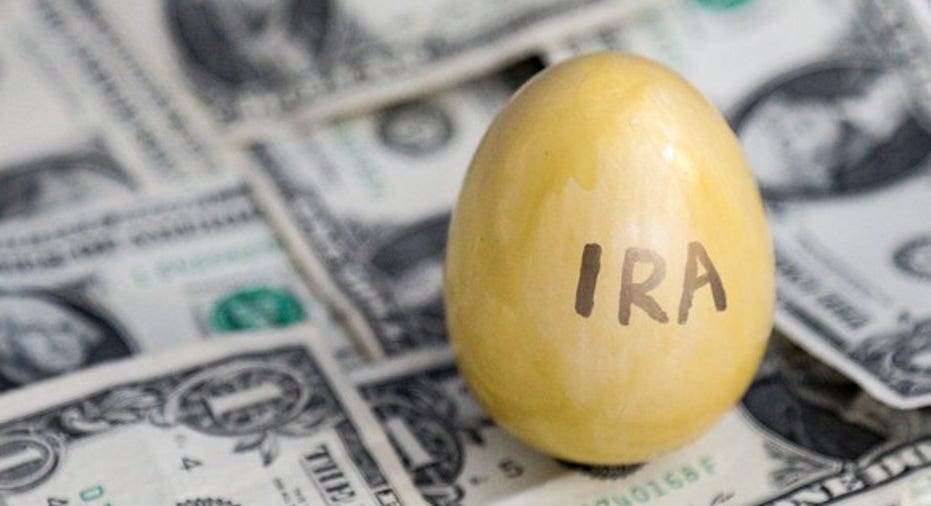What Is the Maximum IRA Contribution Limit for 2017?

I won't keep you in suspense: The 2017 maximum IRA contribution limit is $5,500 (or $6,500 if you're 50 years old or older). Keep in mind that Roth IRAs have different limits based on your income (which can affect your eligibility for a Roth IRA). There are a few other IRA contribution rules that affect whether you can take a tax deduction for your traditional IRA contribution.
Maximize your IRA to grow that retirement nest egg. Image source: Getty Images.
Traditional vs. Roth IRA
When deciding whether and how to contribute to an IRA, it's smart to consider the tax implications. You can deduct traditional IRA contributions from your annual taxes, assuming you meet certain criteria (more on that below). Investments in a traditional IRA grow tax-deferred, which means that no taxes hamper your investments' growth. You'll pay taxes once you withdraw money from your IRA. Traditional IRAs come with two other caveats attached: early withdrawal penalties and required minimum distributions (RMDs). If you withdraw money from a traditional IRA before age 59 1/2, you'll face income taxes and a 10% early withdrawal penalty, unless you meet certain criteria (here are a few examples). And starting April 1of the year after you turn 70 1/2, you have to take a (taxable) annual RMD of a certain percentage of your IRA -- whether you want it or not.
Roth IRAs do not offer an upfront tax break -- but once you've contributed money, it grows tax-free and can be withdrawn in retirement tax-free as well. Money in a Roth IRA can be withdrawn before 59 1/2 without the 10% penalty that applies to traditional IRAs, although taxes often apply. Roth IRAs are also not subject to RMDs, so you can leave that money in as long as you want.
Roth IRA contribution rules
For Roth IRAs, there are income limits beyond which you can't even contribute. They've increased modestly for 2017, and they depend on your tax filing status. All income numbers here and below are adjusted gross income.
Data source: IRS.gov..
Traditional IRA contribution rules
As I noted above, one of the key benefits of a traditional IRA is that it can give you an upfront tax break. If you and your spouse -- or just you, if you aren't married -- don't have access to a workplace retirement plan (usually a 401(k) or a 403(b)), then the IRA tax deduction applies at all income levels. Otherwise:
- If you're single and covered by a workplace retirement plan, the deduction phases out if you earn between $62,000 and $72,000.
- If you're married and covered by a workplace retirement plan, your deduction phases out if you and your spouse combined make between $99,000 and $119,000.
- If you're married and your spouse is covered by a workplace retirement plan, but you aren't, your deduction phases out if you and your spouse combined make between $186,000 and $196,000.
- If you're married, covered by a workplace retirement plan, and filing a separate return, your deduction phases out between $0 and $10,000.
How to save that $5,500 (or $6,500) in 2017
Some people like saving lump sums of money all at once. Personally, I prefer spreading it out across the year with automatic pay deferrals -- a small chunk taken out of each paycheck. This has two benefits: 1) It's a small amount, which makes it easier to stomach from a budgetary standpoint, and 2) It's automatic, which means it requires no effort after the first set-it-and-forget-it decision. There are some serious benefits to this kind of automated saving. Use this simple chart to figure out how much you should defer from each paycheck, assuming you start at the beginning of 2017.
Data source: Author's calculations.
If you're ready to open an IRA now, head on over to our IRA center to see some special "get started" offers.
You'll thank yourself for maximizing your IRA
The beauty of an IRA is that whether you do traditional or Roth, you still end up getting a tax break of one form or another -- just to save for your retirement! And while an IRA shouldn't be your only savings vehicle, you can still build up a sizable nest egg in it: If you save $5,500 per year for 30 years and get an 8% return in the stock market (which is reasonable based on historical market returns), you'll have $623,053.13 in savings. What's even cooler: Only $165,000 of that would be money you contributed -- the rest would all be compounded returns. So get started now, and get that money working for you!
The $15,834 Social Security bonus most retirees completely overlook If you're like most Americans, you're a few years (or more) behind on your retirement savings. But a handful of little-known "Social Security secrets" could help ensure a boost in your retirement income. For example: one easy trick could pay you as much as $15,834 more... each year! Once you learn how to maximize your Social Security benefits, we think you could retire confidently with the peace of mind we're all after.Simply click here to discover how to learn more about these strategies.
Try any of our Foolish newsletter services free for 30 days. We Fools may not all hold the same opinions, but we all believe that considering a diverse range of insights makes us better investors. The Motley Fool has a disclosure policy.